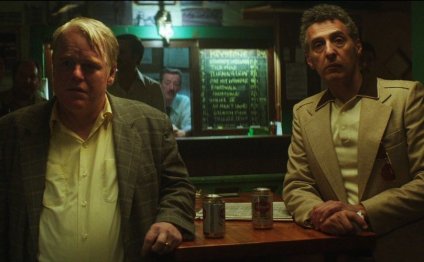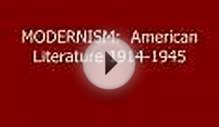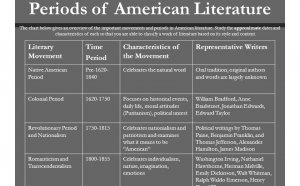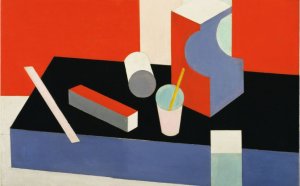
American Modern Literature
- any historians have characterized the period between the two world wars as the United States' traumatic "coming of age, " despite the fact that U.S. direct involvement was relatively brief (1917-1918) and its casualties many fewer than those of its European allies and foes. John Dos Passos expressed America's postwar disillusionment in the novel Three Soldiers (1921), when he noted that civilization was a "vast edifice of sham, and the war, instead of its crumbling, was its fullest and most ultimate expression." Shocked and permanently changed, Americans returned to their homeland but could never regain their innocence.
Nor could soldiers from rural America easily return to their roots. After experiencing the world, many now yearned for a modern, urban life. New farm machines such as planters, harvesters, and binders had drastically reduced the demand for farm jobs; yet despite their increased productivity, farmers were poor. Crop prices, like urban workers' wages, depended on unrestrained market forces heavily influenced by business interests: Government subsidies for farmers and effective workers' unions had not yet become established. "The chief business of the American people is business, " President Calvin Coolidge proclaimed in 1925, and most agreed.
In the postwar "Big Boom, " business flourished, and the successful prospered beyond their wildest dreams. For the first time, many Americans enrolled in higher education - in the 1920s college enrollment doubled. The middle-class prospered; Americans began to enjoy the world s highest national average income in this era, and many people purchased the ultimate status symbol - an automobile. The typical urban American home glowed with electric lights and boasted a radio that connected the house with the outside world, and perhaps a telephone, a camera, a typewriter, or a sewing machine. Like the businessman protagonist of Sinclair Lewis's novel Babbitt (1922), the average American approved of these machines because they were modern and because most were American inventions and American-made.
Americans of the "Roaring Twenties" fell in love with other modern entertainments. Most people went to the movies once a week. Although Prohibition - a nationwide ban on the production, transport, and sale of alcohol instituted through the 18th Amendment to the U.S. Constitution - began in 1919, underground "speakeasies" and nightclubs proliferated, featuring jazz music, cocktails, and daring modes of dress and dance. Dancing, moviegoing, automobile touring, and radio were national crazes. American women, in particular, felt liberated. Many had left farms and villages for homefront duty in American cities during World War I, and had become resolutely modern. They cut their hair short ("bobbed"), wore short "flapper" dresses, and gloried in the right to vote assured by the 19th Amendment to the Constitution, passed in 1920. They boldly spoke their mind and took public roles in society.
Western youths were rebelling, angry and disillusioned with the savage war, the older generation they held responsible, and difficult postwar economic conditions that, ironically, allowed Americans with dollars - like writers F. Scott Fitzgerald, Ernest Hemingway, Gertrude Stein, and Ezra Pound - to live abroad handsomely on very little money. Intellectual currents, particularly Freudian psychology and to a lesser extent Marxism (like the earlier Darwinian theory of evolution), implied a "godless" world view and contributed to the breakdown of traditional values. Americans abroad absorbed these views and brought them back to the United States where they took root, firing the imagination of young writers and artists. William Faulkner, for example, a 20th-century American novelist, employed Freudian elements in all his works, as did virtually all serious American fiction writers after World War I.
Despite outward gaiety, modernity, and unparalleled material prosperity, young Americans of the 1920s were "the lost generation" - so named by literary portraitist Gertrude Stein. Without a stable, traditional structure of values, the individual lost a sense of identity. The secure, supportive family life; the familiar, settled community; the natural and eternal rhythms of nature that guide the planting and harvesting on a farm; the sustaining sense of patriotism; moral values inculcated by religious beliefs and observations - all seemed undermined by World War I and its aftermath.
Numerous novels, notably Hemingway's The Sun Also Rises (1926) and Fitzgerald's This Side of Paradise (1920), evoke the extravagance and disillusionment of the lost generation. In T.S. Eliot's influential long poem The Waste Land (1922), Western civilization is symbolized by a bleak desert in desperate need of rain (spiritual renewal).
The world depression of the 1930s affected most of the population of the United States. Workers lost their jobs, and factories shut down; businesses and banks failed; farmers, unable to harvest, transport, or sell their crops, could not pay their debts and lost their farms. Midwestern droughts turned the "breadbasket" of America into a dust bowl. Many farmers left the Midwest for California in search of jobs, as vividly described in John Steinbeck's The Grapes of Wrath (1939). At the peak of the Depression, one-third of all Americans were out of work. Soup kitchens, shanty towns, and armies of hobos - unemployed men illegally riding freight trains - became part of national life. Many saw the Depression as a punishment for sins of excessive materialism and loose living. The dust storms that blackened the midwestern sky, they believed, constituted an Old Testament judgment: the "whirlwind by day and the darkness at noon."
The Depression turned the world upside down. The United States had preached a gospel of business in the 1920s; now, many Americans supported a more active role for government in the New Deal programs of President Franklin D. Roosevelt. Federal money created jobs in public works, conservation, and rural electrification. Artists and intellectuals were paid to create murals and state handbooks. These remedies helped, but only the industrial build-up of World War II renewed prosperity. After Japan attacked the United States at Pearl Harbor on December 7, 1941, disused shipyards and factories came to bustling life mass- producing ships, airplanes, jeeps, and supplies. War production and experimentation led to new technologies, including the nuclear bomb. Witnessing the first experimental nuclear blast, Robert Oppenheimer, leader of an international team of nuclear scientists, prophetically quoted a Hindu poem: "I am become Death, the shatterer of worlds."
MODERNISM
he large cultural wave of Modernism, which gradually emerged in Europe and the United States in the early years of the 20th century, expressed a sense of modern life through art as a sharp break from the past, as well as from Western civilization's classical traditions. Modern life seemed radically different from traditional life - more scientific, faster, more technological, and more mechanized. Modernism embraced these changes.
In literature, Gertrude Stein (1874-1946) developed an analogue to modern art. A resident of Paris and an art collector (she and her brother Leo purchased works of the artists Paul Cézanne, Paul Gauguin, Pierre Auguste Renoir, Pablo Picasso, and many others), Stein once explained that she and Picasso were doing the same thing, he in art and she in writing. Using simple, concrete words as counters, she developed an abstract, experimental prose poetry. The childlike quality of Stein's simple vocabulary recalls...
RELATED VIDEO



Share this Post
Related posts
Modern American Literature authors
An incisive study of modern American literature, casting new light on its origins and themes Exploring canonical American…
Read MoreAmerican Modernist Literature
In this lesson, we will discuss the concept of literary modernism in the United States. We will explore its historical backdrop…
Read More










